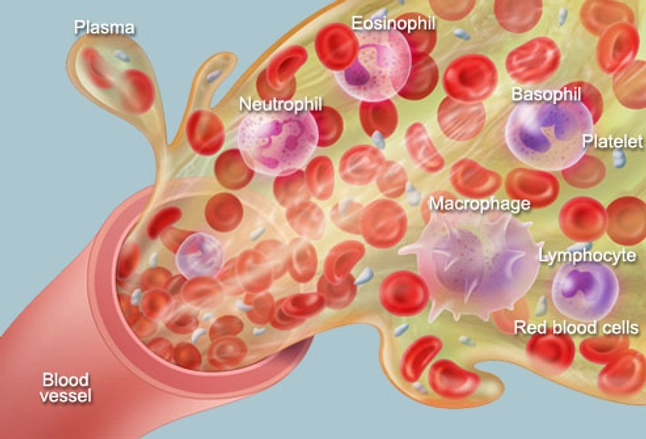Blood
Blood is a body fluid in humans and other animals that delivers necessary substances such as nutrients and oxygen to the cells and transports metabolic waste products away from those same cells.
By volume, the red blood cells constitute about 45% of whole blood, the plasma about 54.3%, and white cells about 0.7%.
Veins close to the surface of the skin appear blue for a variety of reasons. However, the factors that contribute to this alteration of color perception are related to the light-scattering properties of the skin and the processing of visual input by the visual cortex, rather than the actual color of the venous blood.
Skinks in the genus Prasinohaema have green blood due to a buildup of the waste product biliverdin.
 |
| Skinks |
Blood clotting
Blood clotting normally occurs when there is damage to a blood vessel. Platelets immediately begin to adhere to the cut edges of the vessel and release chemicals to attract even more platelets. A platelet plug is formed, and the external bleeding stops.
Next, small molecules, called clotting factors, cause strands of blood-borne materials, called fibrin, to stick together and seal the inside of the wound. Eventually, the cut blood vessel heals and the blood clot dissolves after a few days.
Pus
Pus is an exudate, typically white-yellow, yellow, or yellow-brown, formed at the site of inflammation during bacterial or fungal infection.
Pus consists of a thin, protein-rich fluid (historically known as liquor puris) and dead leukocytes from the body's immune response (mostly neutrophils).
practice quiz ⏬⏬⏬
See all the quizzes ⏬⏬⏬

2 Comments
Nice 👍
ReplyDelete🌞🤖🤖🤖
ReplyDelete